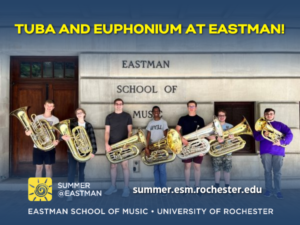During the second half of the 20th century, the tuba has experienced a great development as a solo instrument due to the evolution of its players and the appearance of great soloists. Composers such as Hindemith, Vaughan Williams, Wilder, Persichetti or John Williams, seeing in the tuba a versatile and expressive instrument that had been little exploited in this field until then, have written fantastic pieces for tuba during this time, using conventional musical notation and creating a standard repertoire that did not exist before.
At the same time, from 1970 onwards, following the break with the aesthetics of romanticism that many composers had been making for several decades, the authors of the new compositional currents began to search for new sonorities produced with traditional instruments. Composers such as Adler, Dubrovay, Kagel, Kraft or Stockhausen, seeing the enormous technical versatility and the great variety of sound effects that could be achieved with a tuba, beyond the traditional frullatos, glissandos and mutes, decided to write their works for this instrument using a good number of unconventional sounds. As a result, a new path was opened up for the tuba with the creation of a repertoire in which it is easy to find multiphonics, slaps, percussion effects, bendings, sound processing, etc.
This work aims to analyse the current situation of the state of the tuba repertoire that includes extended techniques or sound effects, analysing its valuation by soloists, its programming in competitions and its teaching in music conservatories.

